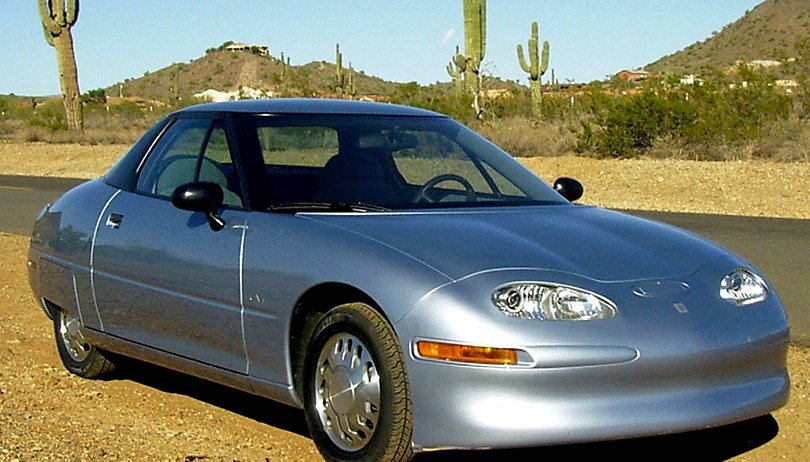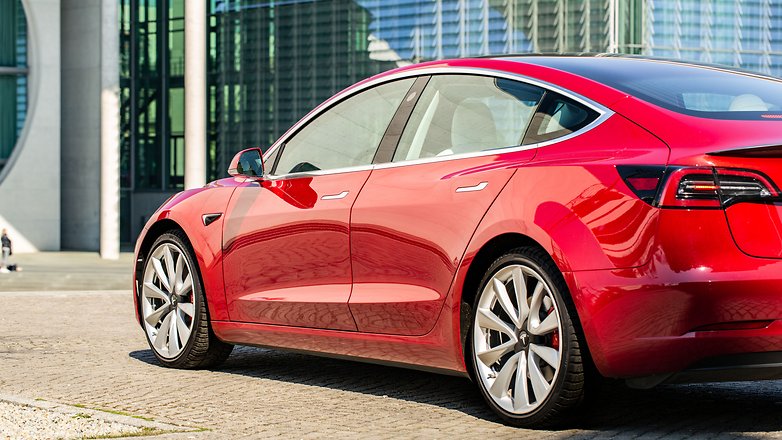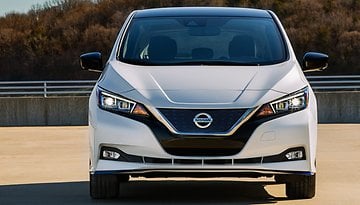#TBT - General Motors EV1: controversy and crushed innovation


Read in other languages:
The General Motors EV1 remains one of the most interesting production cars of all time. It was a first of many things and sparked imaginations. Yet it was cloaked in controversy died an untimely death. The EV1 was eventually crushed, and even today people are still asking why…
The GM EV1 was the first mass-produced and purpose-designed electric vehicle. But the reason it has gone down in history as one of the most talked about and controversial vehicles of the modern era requires a little more storytelling. Let’s start at the beginning.
Innovation that was well-received
Produced and leased from 1996 to 1999, the EV1 is often chalked up as some kind of failure. The reality is a little more complicated. Fully-electric cars had been conceived of before, but not much had happened in the market since the early 60s. When the EV1 was revealed, the first (and last ) passenger car to be marketed under the General Motors name rather than one of its owned brands, the reception was positive.
The EV1 Gen II was powered by an electric powertrain and used 312–volt lead-acid batteries. Up to 102 kW of power was available, and range was as much as 100 miles (160km) - which is poor by today’s standards, but we’re talking about the mid-90s here. Acceleration of 0–50 mph (0–80 km/h) in 6.3 seconds was achievable. A version with a Nickel–metal hydride battery did extend the range to up to 140 miles (230 km).

The design was futuristic, and the cockpit looked like nothing on the market. Modern technology was everywhere on this thing. It had keyless entry and ignition (via a PIN code), anti-lock brakes and power steering. It came with a CD player and air conditioning. People liked it, too. Some people loved it.
Why is the EV1 so rare today?
Part of the reason behind the myth of the EV1 was the strange way it was marketed and sold. I say ‘sold’, but you couldn’t actually walk into a dealership and buy an EV1. General Motors only leased them.
The 'price' of a new GM EV1 was worked out as $33,995, and drivers could expect to have to pay monthly sums of anywhere between $299 to $574. As none were ever sold outright, we don't really know what the true market value of the EV1 ever was. Reports have suggested that each EV1 was costing GM $80,000 to make. The manufacturer said that the total cost of the program was $500 million before marketing costs, but even that figure is a little too clean to be completely accurate.

In its first year, GM only leased 288 EV1s. Part of the problem was availability - you could only get your hands on the car in some regions. Those in Southern California and Arizona were the first to be eligible for a lease.
But the EV1s rarity is not only down to low production and leasing rates. When the project was eventually canceled in 1999, GM not only shut down the assembly line, it started rounding up EV1s that were already on the roads. Leasees protested and wrote letters to the company requesting lease extensions and agreeing to be responsible for the maintenance and repair costs. GM refused, and returned checks totaling $22,000. The manufacturer made it clear: it didn't want your money, it just wanted its car back. EV1s were rounded up and either donated to museums, universities, or crushed...

Only 1,117 EV1s were ever produced. By 2002, there wasn't a single registered EV1 on the road. Finding a working model that escaped the scrapyards today is virtually impossible.
Why was the EV1 canceled?
The answer to this question is complicated, and there is not really a satisfying conclusion. Initially, the move was met with surprise. Angry EV1 drivers couldn’t believe why their vehicle was being taken away and destroyed.
At a hearing in 2000, GM claimed that consumers were simply not showing sufficient interest in the EV1 to meet the sales requirements called for by the mandates imposed on them. The California Air Resources Board (CARB) had ruled that each of the US' seven largest carmakers would have to make 2% of its fleet emissions-free by 1998, 5% by 2001, and 10% by 2003. GM was the largest manufacturer on that list.

But it didn’t really fly, and the EV1’s cancellation became controversial. A documentary in 2006 titled ‘Who Killed The Electric Car?’, explored the hypothesis that traditional auto manufacturers and the oil industry had moved to halt the rise of electric vehicles. Dave Barthmuss, a spokesman for GM at the time, countered that it was a lack of consumer interest due to the low maximum range and the high price of electric cars that killed them.
- 'Motorsport is marketing' - how BMW uses Formula E to sell electric cars
What is is the EV1’s legacy?
Some of those EV1s that ended up in museums and at universities have since been reactivated and driven on public roads, although General Motors has kicked up a fuss about institutions violating the agreements of its donation. But despite all of this, fully-electric cars are back in a big way.
Manufacturers, driven by legislation and the incoming ban on diesel cars followed by the combustion engine completely, are investing heavily in new EVs. Battery technology is advancing, as are fast-charging solutions. Charging infrastructure is growing, too. The electric car is the future, at least if you go off what the manufacturers are pouring money into.

In 2017, Elon Musk stated that he started Tesla as a direct response to the cancellation of the GM EV1. When you look at what that company has gone on to achieve in the field of electric vehicles and e-mobility in general, the EV1 certainly played a very important role in the history of electric automobiles.
We may never get the truth of why it was killed off, but one thing is for sure, the EV1 has made its mark on automotive history, and that is something that will never die.














It was very expensive for the time and not practical for most customers.